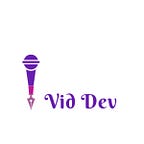A genius called Dikshitar
Although the Dikshitar is a family of composers and musicians and everyone had contributed to Carnatic Music, the name Dikshitar by default refers to Muthuswamy Dikshitar, who is also one of the Trinity (comprising of Thyagaraja, Muthuswamy Dikshitar and Syama Sastri). This post is simply an introduction to Muthuswamy Dikshitar (1775–1835), a carnatic composer I love and adore the most. It simply cannot do justice to his abundant and rich creations nor do I claim to know all about them.
Identifying a Dikshitar composition
For someone new to listening carnatic music, here are a few things that could help you identify if a particular composition being rendered is Dikshitar.
- the composer’s mudra (signature) is Guruguha, and it could be found in any part of the composition viz., Pallavi, Anupallavi or Charanam
- the language of lyrics is Sanskrit
- the charanam will have madhyama kala sahithyam (fast paced lyrics) and in addition, there could also be madhyama kala sahithyam in the Pallavi and/or Anupallavi
- most of the songs will feature the raga mudra (the raga name as used by Dikshitar)
Documenting the Gods
Dikshitar’s compositions are like documentation for posterity. His songs are filled with philosophical content, aliterations and ingenious ways of incorporating the mudras into the meaning of the lyrics. He was a well travelled man and he wrote compositions on temples and places he visited — hence the name of the kshetra, its Gods and Goddesses, history, mythology, geography and other such details could be easily gleaned from his compositions.
Asampurna Melakartha Ragas
Dikshitar followed the ragas as per the Asampurna Nomenclature and so his compositions in those songs were also set as per the grammer of the said ragas which were slightly different from the ragas of the same melakartha number in the Katapayadhi scheme. He is said to have composed relatively smaller compositions with “Samashti Charanam” (no Anupallavi section) in most of the vivadhi ragams in order to introduce those particular ragams to his students, the Thanjavur Quartet.
My Goto Playlist
Again, I cannot list down every Dikshitar composition I love as each will have something or the other special about them. So I will try to restrain myself to a small list, that throws light on the variety of songs he has written.
- Sree Vishwanatham Bhajeham set in ragamalika of 14 ragams, thus it is called “Chathurdasa Ragamalika”
- Diwakara Tanujham set in Yadhukula Kamboji, a Navagraha krithi on Saturn
- Bala Gopala set in Bhairavi, that captures the entire essence of the ragam; it also refers to himself (Muthuswamy Dikshitar) as the one who plays veena in the phrase “Vainika Gayaka”
- Sri Nathathi Guruguho set in Mayamalava Gowla, where the Pallavi itself incorporates 3 speeds and all 8 lines of charanam rhymes beginning with the letter Ma
- Meenakshi Memudham Dehi set in Purvi Kalyani, aka Gamakakriya; the song refers to the ragam as having all the gamakas (dasavidha gamakas) in the phrase “Dasa Gamakakriye”
- Nottuswarams such as Pankaja Mukha, Vandhe Meenakshi Tvam
- Sree Gananatham Bhajare set in Eesa Manohari, a cute little prayer song
Dikshitar’s life and works
Dikshitar was born in Thiruvarur, the same place that bore Thyagaraja and Syama Sashtri. I wonder what magic the place beheld to have given us such masters of music! Dikshitar sang his first song on Lord Muruga of Thiruthani, that begins “Sri Nathathi Guruguho” in the ragam Mayamalava Gowla. From then on, there was no stopping him, and he has written over 500 plus songs.
Dikshitar has composed group compositions called Nava Varnam on the Goddess Kamalamba of Thiruvarur, and also other nava varnams, Navagraha krithis et al.,
He had a sudra (so called) disciple called Thambiyappan, definitely an unconventional idea for those days. He is also said to have been so devout in his meditation and music, that he paid very little attention to family life. And his family assumed it was because of his dark skinned wife, and made him remarry a fairer woman, but he remained steadfast even afterwards. He is also said to have cured diseases by his compositions — music therapy of those days.
His last composition was “Meenakshi Memudham Dehi” in the ragam Purvi Kalyani. He sang it in Madurai, came back to Ettayapuram and taught it to his disciples. The next day, there was a rougish elephant that went beresek and created havoc in the city. In his deathbed, he is said to have called his disciples and requested them to sing his last composition, when he breathed his last listening to his own composition. He died on the day of Diwali, and is buried in the spot that was reserved by the elephant.
His family is extinct in the male-line now. And though I might have a family name ending in Dikshitar, and sometimes I wish I was one of his descendants!
References
- Wikipedia
- Muthuswamy Dikshitar Keerthanaigal by Sundaram Iyer
